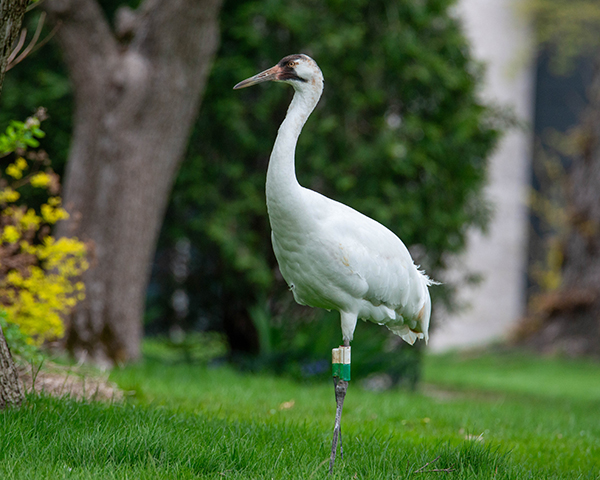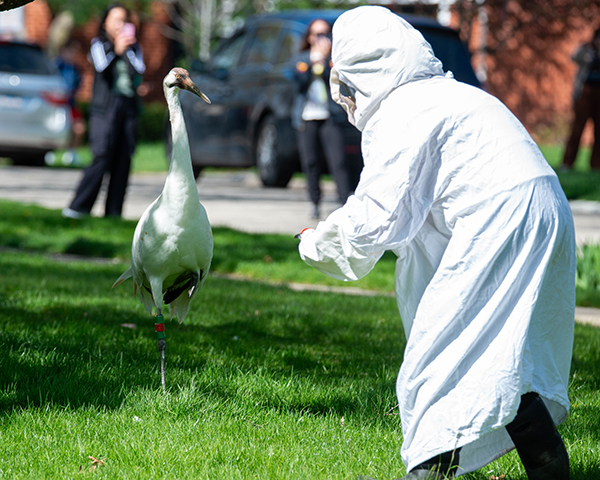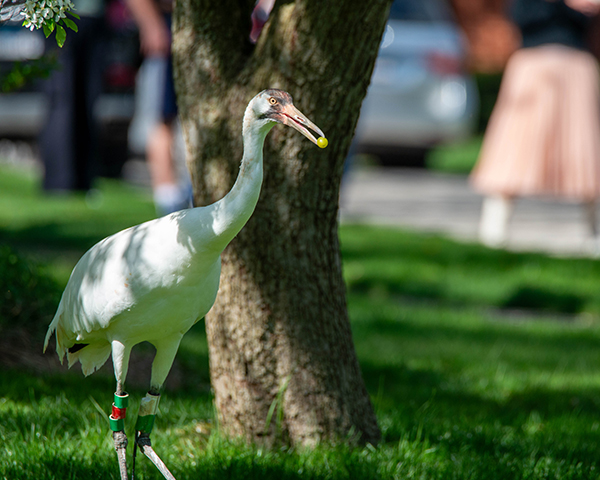CONTACT: Ryan Michalesko, Communications & Advocacy Specialist, 608-356-9462 ext. 113
April 24, 2024 (Wilmette, Illinois) – A young Whooping Crane, 16-23 a.k.a. Animal, was reported by local birders in a residential neighborhood of Wilmette, a suburb of Chicago, Tuesday morning. The crane is a member of the Eastern Migratory Population of reintroduced Whooping Cranes and was raised and released to the wild by the International Crane Foundation.





From Upper Left to Right: Whooping Crane, 16-23, stopped during her first northern migration in a residential neighborhood in Wilmette, Illinois. Our Whooping Crane Project Manager Hillary Thompson and Crane Conservation Fellow Alicia Ward quickly prepared to travel from our headquarters to northern Illinois and arrived at the site after a three-hour drive. Hillary carefully approached 16-23 while wearing a crane costume with grapes in hand (a special treat for cranes). After expertly securing the young crane, Alicia, Hillary, Barb Royal, DVM, and Brad Semel with the Illinois Department of Natural Resources conducted a quick medical examination and prepped her for return to Wisconsin. Photos courtesy Scott Judd.

Given the threats of such a high-traffic area, the International Crane Foundation, along with veterinary professionals and the Illinois Department of Natural Resources, intervened yesterday afternoon to capture and relocate the crane to safety. Based on an assessment by veterinary professionals on-site, 16-23 is believed to be in good health, and the International Crane Foundation safely re-released her at Horicon Marsh in eastern Wisconsin Tuesday evening.
Whooping Cranes are one of the rarest and most endangered bird species in North America. Their total population is estimated at just 831 individuals globally. We are appreciative of local residents and the Chicago birding community for alerting the Foundation of the bird’s location.
